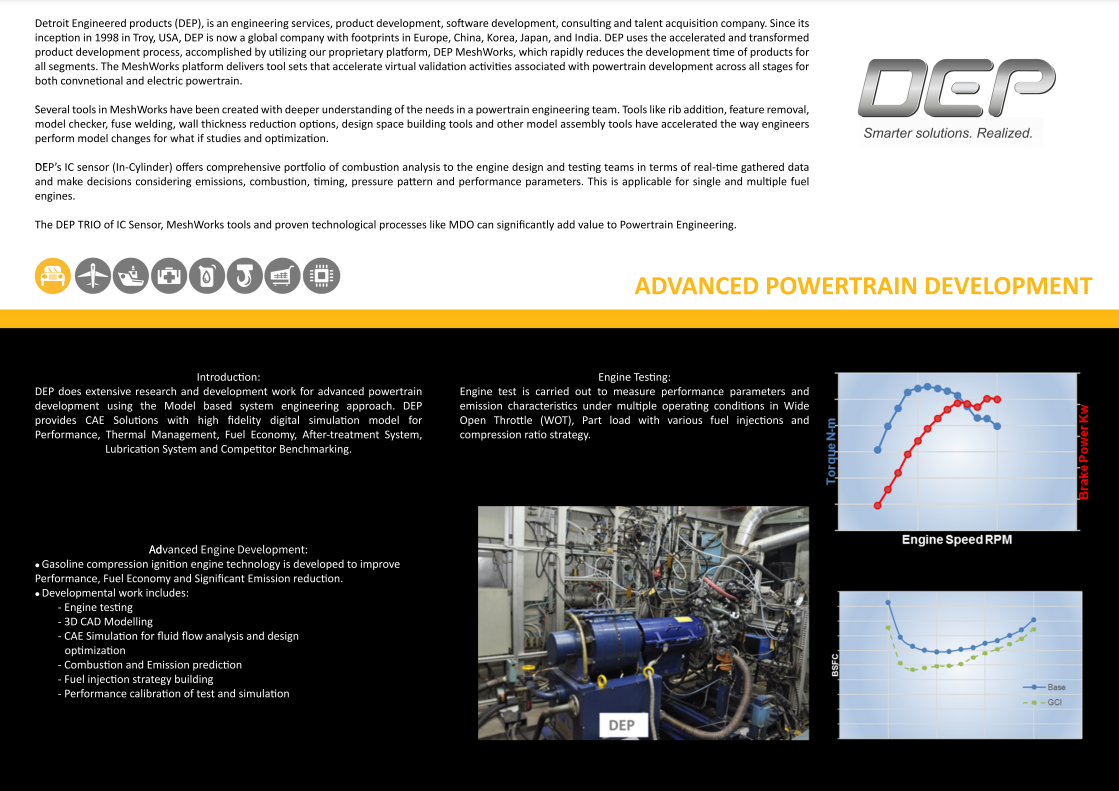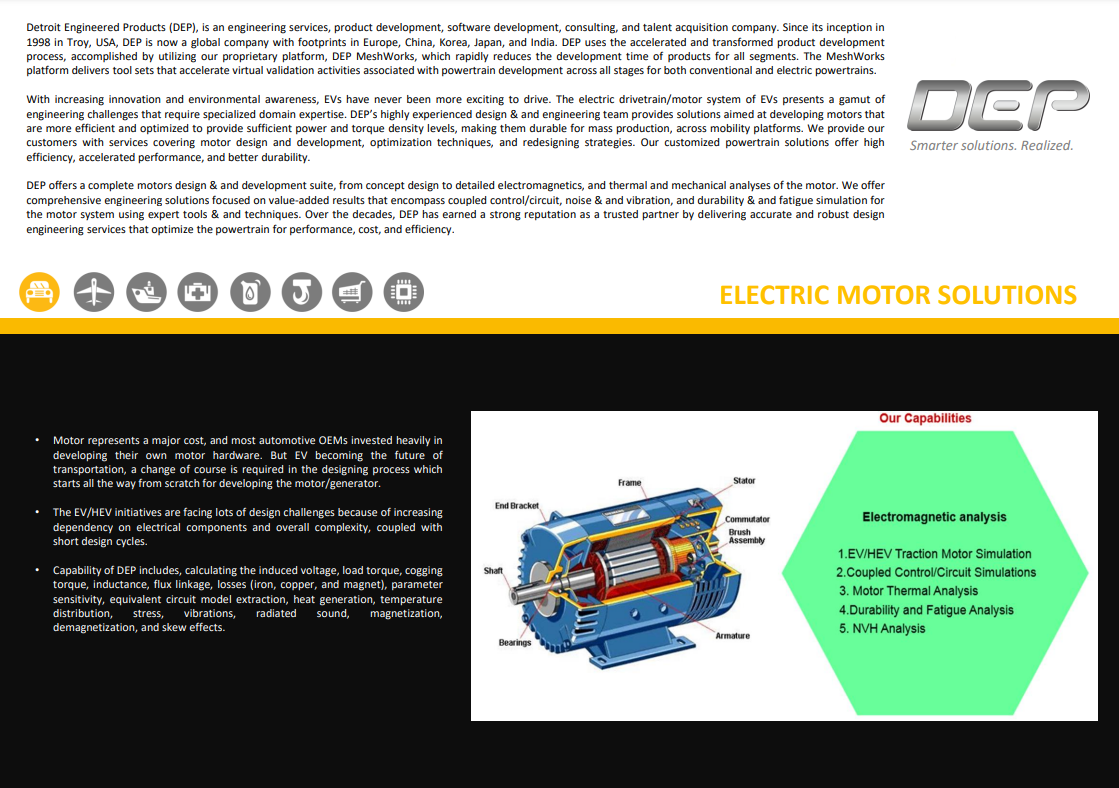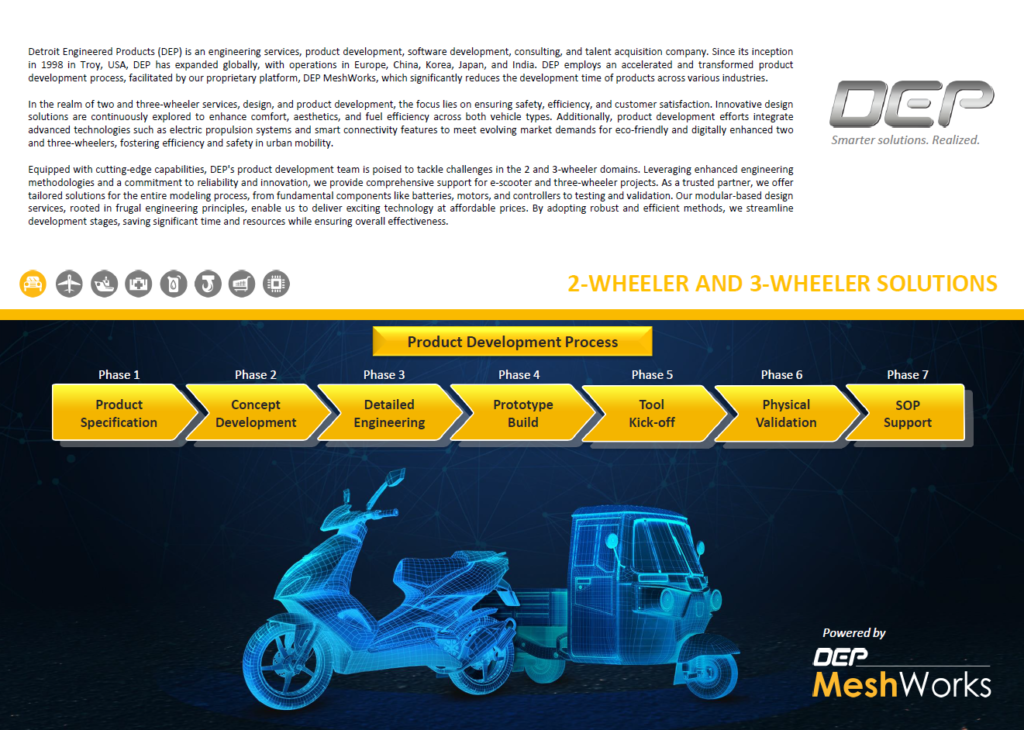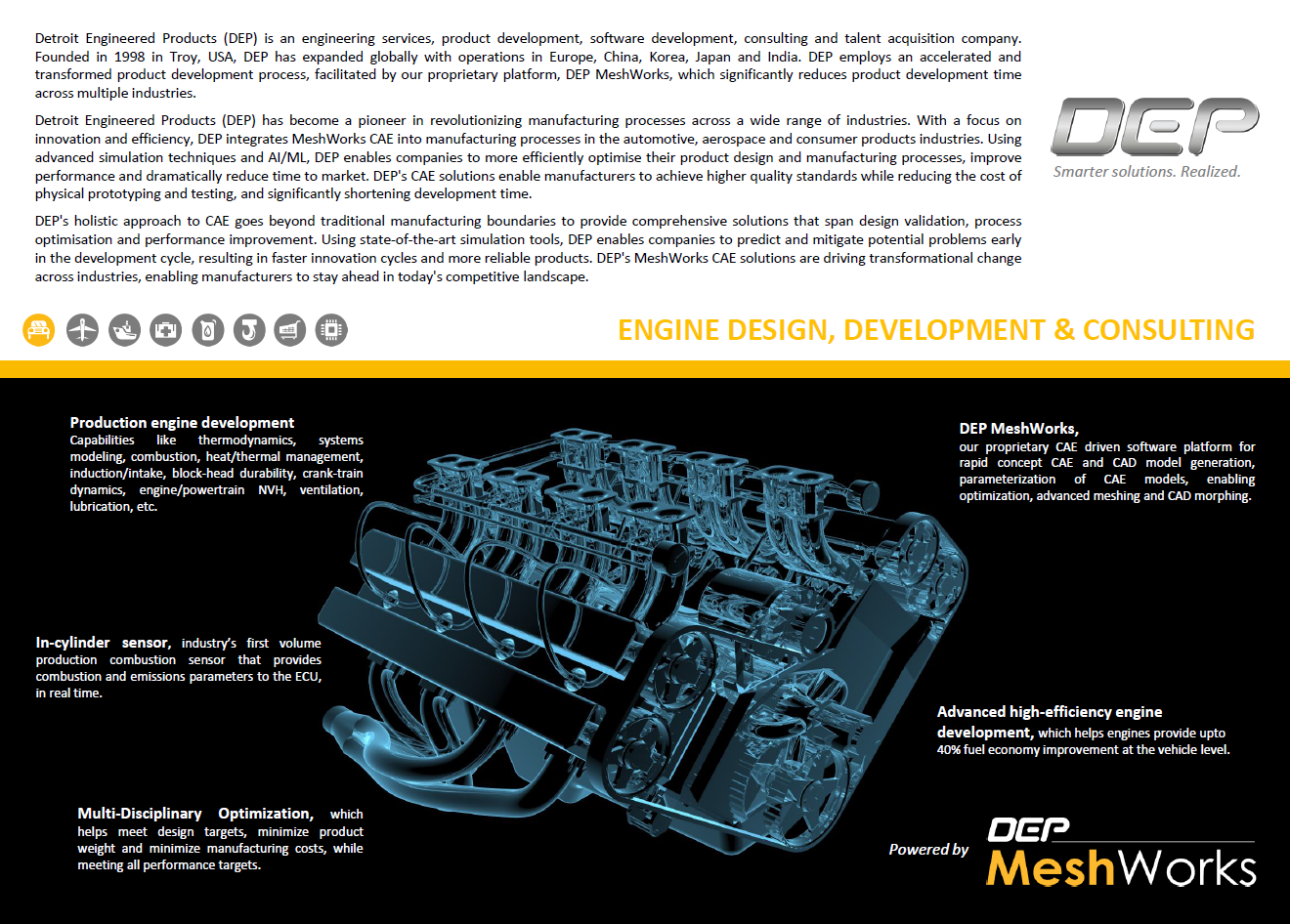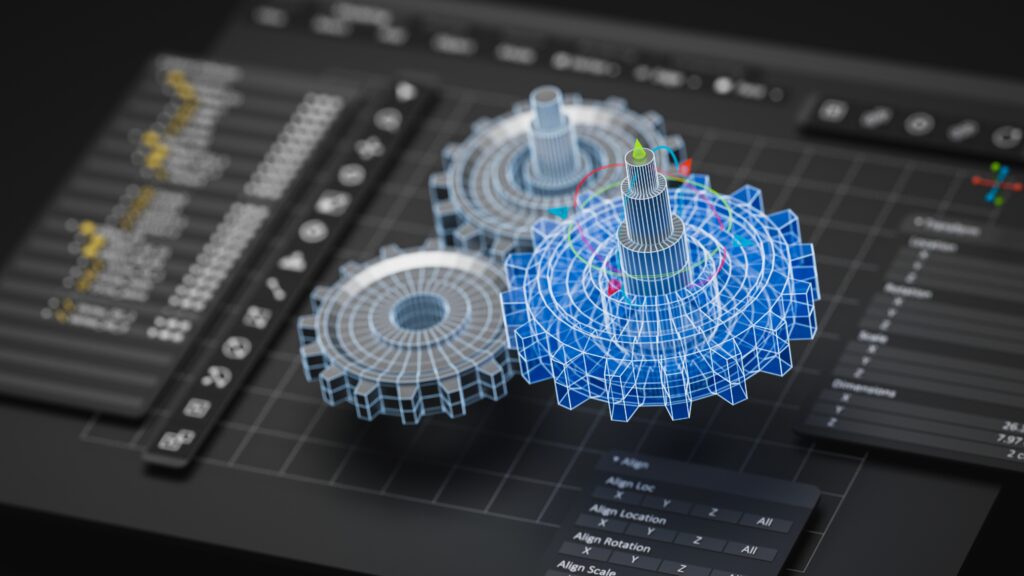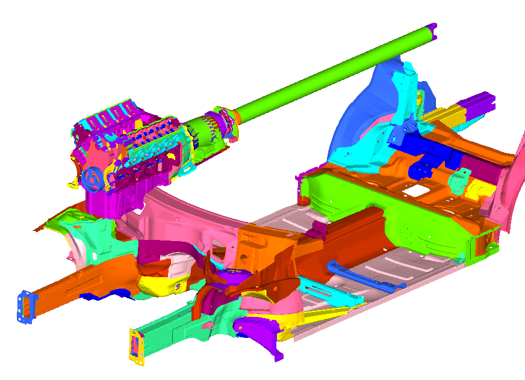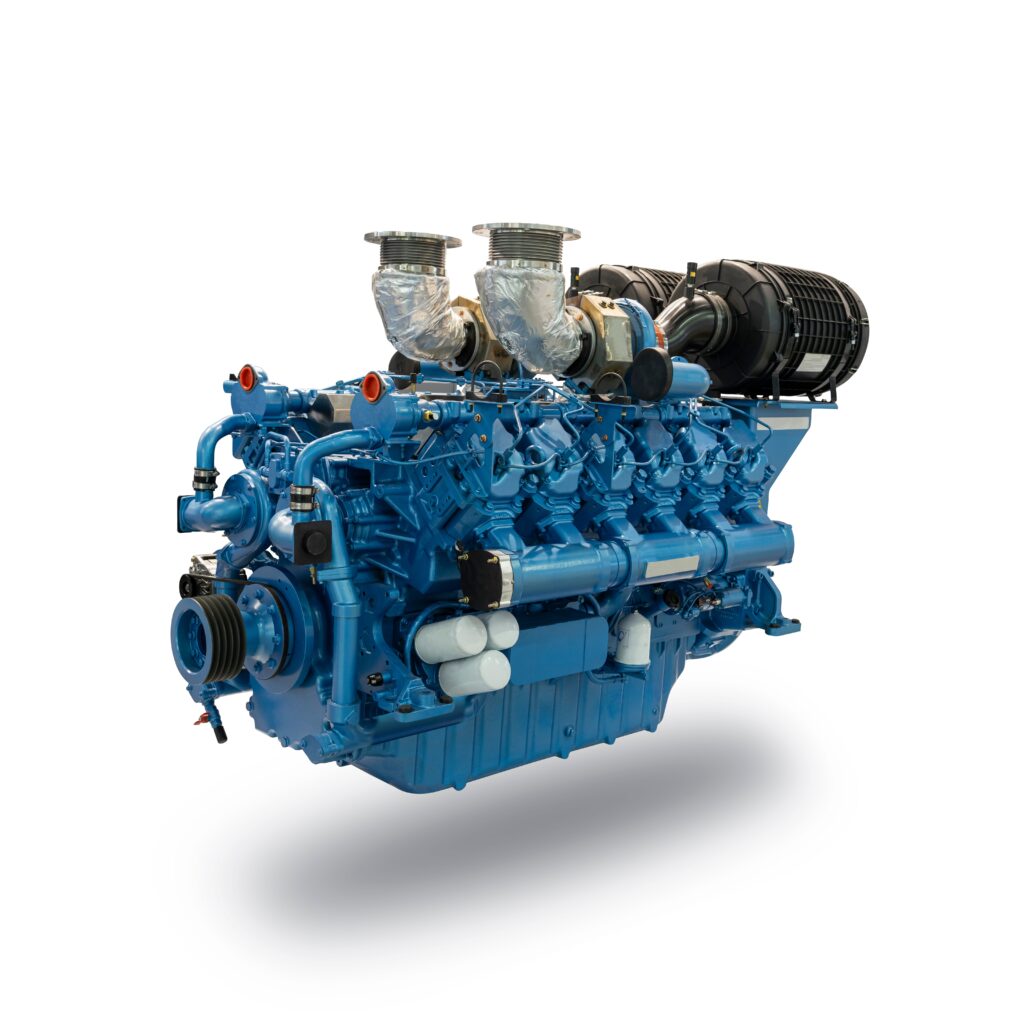
The Role of Simulation in Propulsion
Simulation plays a pivotal role in designing, optimizing, and validating propulsion systems for electric and hybrid vehicles. It enables engineers to evaluate the performance of batteries, drive units, and cooling systems in virtual environments, helping identify issues early, reduce physical testing, and accelerate time-to-market. Simulations help quantify losses, optimize energy efficiency, and improve reliability across vehicle drive cycles. By incorporating system-level and component-level modeling, it ensures accurate predictions of performance, safety, and thermal behavior under real-world conditions.
Propulsion System Modeling Strategies in Product Development
Advanced modeling techniques are essential to design, simulate, and optimize propulsion systems for electric and hybrid vehicles. These models range from component-level to full-system-level to ensure accurate performance predictions and design validation.
System-Level Modeling
- Models the entire vehicle propulsion system, including electric motors, batteries, power electronics, and hybrid components
- Simulates real-world interactions involving vehicle mass, aerodynamic drag, terrain conditions, and regenerative braking strategies
- Enhances accuracy by integrating with 3D CFD and FE models for drag force and thermal performance predictions
Battery Modeling
- Provides in-depth electrochemical, thermal, and structural analysis of battery cells, modules, and packs
- Uses Equivalent Circuit Models (ECM) for fast and efficient simulation of battery behavior at the system level
- Employs advanced 3D multi-physics modeling to study internal current flow, heat generation, lithium plating, and material expansion
Drive Unit (Motor) Modeling
- Performs electromagnetic simulations to analyze torque output, efficiency losses, and speed-torque characteristics
- Includes structural and thermal modeling of motor components such as housing, rotors, and stators
- Supports reverse-engineered modeling using benchmarking insights and hardware test data
Control and Thermal System Modeling
- Simulates control strategies including regenerative braking and motor control logic
- Designs and optimizes thermal management systems including coolant flow paths, cooling jackets, and fan configurations
In-Depth Analysis Techniques for Propulsion Systems
Simulation-driven analysis offers deep insights into component and system behavior across a range of operating conditions, ensuring reliability, safety, and performance
Battery Analysis
- Evaluates battery performance under dynamic load cycles such as WLTC and FTP
- Simulates thermal runaway initiation and propagation to assess safety risks
- Analyzes mechanical deformation and crashworthiness of battery packs
- Predicts lithium plating and long-term capacity degradation under various conditions
Drive Unit Analysis
- Assesses motor losses, magnetic saturation effects, and back-EMF behavior
- Models heat generation and dissipation via conduction and convection mechanisms
- Conducts structural analysis to evaluate fatigue, deformation, and acoustic performance
System-Level Analysis
- Simulates energy flow across key components: battery, inverter, and motor
- Performs efficiency and range analysis across varying terrain and driving conditions
- Supports trade-off studies for optimal sizing of battery, motor, and cooling systems
How Simulation Drives Smarter Propulsion System Design
Simulation directly influences propulsion system design by
- Improving motor and battery efficiency through design iterations.
- Reducing size and weight without compromising performance.
- Ensuring battery safety under thermal stress and crash conditions.
- Enhancing cooling strategies to manage high thermal loads during acceleration, hill climbs, or high ambient temperatures.
- Supporting decisions like cell format, battery placement, and drive unit design by quantifying trade-offs.
Conjugate Heat Transfer and Propulsion Reliability
Effective thermal management is vital for propulsion system reliability. Conjugate heat transfer (CHT) simulations model the interaction of solid structures (e.g., battery casings, motor housing) with coolant or airflow. 球速体育 leverages CHT to:
- Predict temperature gradients across cells and motors.
- Design optimal coolant jackets, busbar placement, and airflow paths.
- Prevent thermal runaway by understanding localized heating near busbars or hotspots.
- Support thermal system layout decisions early in the design phase.
This ensures consistent propulsion performance and avoids failures due to overheating, especially during sustained high-load conditions.
Advanced Propulsion Technologies Powered by 球速体育
球速体育 offers end-to-end simulation and modeling services across propulsion domains:
- Battery Systems: From reverse engineering of packs to electrochemical modeling, thermal analysis, structural evaluation, and safety simulation.
- Drive Units: Electromagnetic, thermal, and structural modeling of electric motors with benchmarking support.
- System Modeling: Full-vehicle level simulations integrating all propulsion components and control systems.
- Thermal Management: CFD-based analysis, CHT simulations, and cooling system optimization.
- Simulation Automation: Using 球速体育 MeshWorks for morphing, parameterization, and time-saving modeling workflows.
- Test Correlation: Validation of simulation models using real-world test data and benchmarking.
The Future of Propulsion Simulation, Modeling, and Analysis
As the transportation industry accelerates toward electrification and sustainability, the landscape of propulsion system development is rapidly evolving. The future of simulation, modeling, and analysis is being shaped by advanced digital technologies that promise greater speed, accuracy, and insight across the product lifecycle.
Key trends include:
- Real-Time Digital Twins: Next-gen propulsion systems will be monitored continuously through digital twins, enabling predictive maintenance, real-time performance tracking, and operational optimization based on live data inputs.
- AI-Driven Modeling: Artificial intelligence and machine learning are transforming how models are built and refined – automating calibration, enhancing precision, and reducing turnaround time for simulation cycles.
- Multiphysics Co-Simulation: As propulsion systems grow more complex, simulation tools are converging across domains – allowing for simultaneous analysis of electromagnetic, thermal, and structural behavior. This holistic view supports more robust and optimized designs.
- Virtual Validation Pipelines: The future is digital-first. Virtual testing environments allow engineers to validate propulsion systems under realistic operating conditions, significantly cutting down the need for physical prototypes and accelerating time-to-market.
- Sustainability-Centric Design: Advanced simulation will incorporate environmental factors from the start – modeling material usage, recyclability, and lifecycle energy consumption to support eco-conscious engineering decisions.

